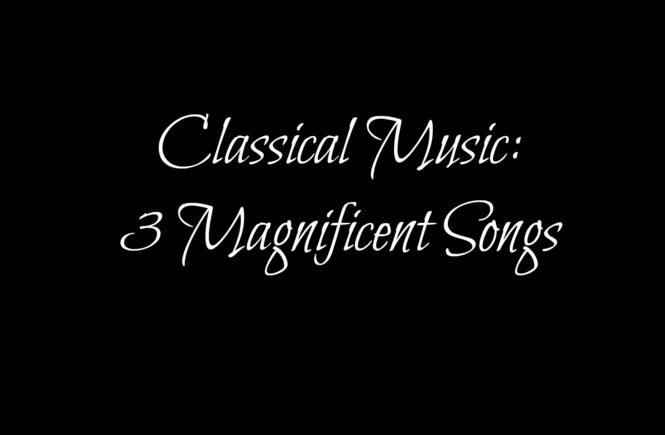“To send light into the darkness of men’s hearts
– such is the duty of the artist.”
Robert Schumann
One of my very first posts I wrote on here was 5 Breathtaking Classical Songs. I adore classical music. There have been numerous studies on the benefits of classical music, which I may write about in its own post. I briefly talked about in the last classical music post about how my mother introduced me to classical music at a young age, so I completely agree with Luciano Pavarotti’s quote, “It is so important for people at a young age to be invited to embrace classical music and opera.”
Without further ado, here are 3 Classical songs that are exquisitely magnificent:
Morning Mood, Edvard Grieg
I’ve had this one on repeat for a couple months, I can’t seem to get enough of this uplifting melody! It’s incredibly moving. This was composed by a 5 foot tall Norwegian named Edvard Grieg for the play Peer Gynt.
La Cathédrale Engloutie, Claude Debussy
Simply elegant and breathtaking. Debussy amazes my soul. The title translates as The Sunken Cathedral and is based off a fascinating legend.
“This piece is based on an ancient Breton myth in which a cathedral, submerged underwater off the coast of the Island of Ys, rises up from the sea on clear mornings when the water is transparent. Sounds can be heard of priests chanting, bells chiming, and the organ playing, from across the sea.[2] Accordingly, Debussy uses certain harmonies to allude to the plot of the legend, in the style of musical symbolism.
To begin the piece, Debussy uses parallel fifths. The first chord of the piece is made up of sonorous Gs and Ds (open fifths). The use of stark, open fifths here allude to the idea of church bells that sound from the distance, across the ocean.[3] The opening measures, marked pianissimo, introduce us to the first series of rising parallel fifth chords, outlining a pentatonic scale. These chords bring to mind two things: 1) the Eastern pentatonic scale, which Debussy heard during a performance of Javanese gamelan music at the 1889 Universal Exhibition in Paris,[4] and 2) medieval chant music, similar to the organa in parallel fifths from the Musica enchiriadis, a 9th-century treatise on music.[5] The shape of the ascending phrase is perhaps a representation of the cathedral’s slow emergence from the water.
After the beginning section, Debussy gently brings the cathedral out of the water by modulating to B major, shaping the melody in a wave-like fashion, and including important narrative instructions in measure 16: Peu à peu sortant de la brume (Emerging from the fog little by little). This shows Debussy at his closest manifestation of musical impressionism.[6] Then, after a section marked Augmentez progressivement (Slowly growing), the cathedral has emerged and the grand organ is heard at a dynamic level of fortissimo (measures 28-41). This is the loudest and most profound part of the piece, and is described in the score as Sonore sans dureté. Following the grand entrance and exit of the organ, the cathedral sinks back down into the ocean (measures 62-66) and the organ is heard once more, but from underwater. To attain these effects that reflect images of the castle, most performers use specific techniques with regards to pedaling and articulation to affect tone color. For example some performers use their full body weight to depress keys to create a rich sound. Also performers create a ringing bell sound by instantly releasing pedaled notes. Finally, the cathedral is gone from sight, and only the bells are heard, at a distant pianissimo.” (source here)
Swan Theme, Pyotr Tchaikovsky
Absolutely beautiful. Composed by Tchaikovsky for the ballet Swan Lake.



